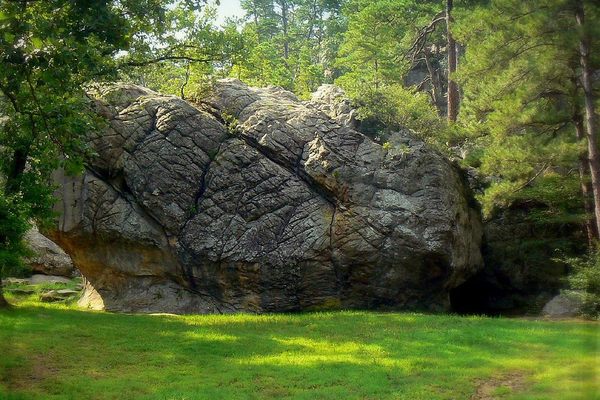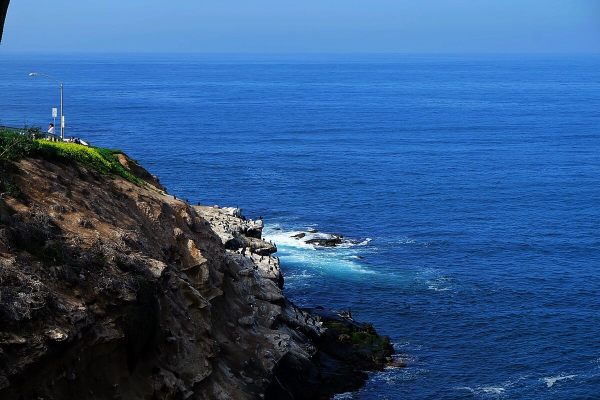The Missouri Orchid Farmer Who Ditched His Greenhouse for a Cave
Turns out there are plenty of upsides to growing delicate flowers underground.

Orchids are among the most delicate and fickle of all flowers, but they produce some of the most mind-bendingly beautiful blooms in the natural world. So it’s little surprise that some people will go to extraordinary lengths to get them to grow just right.
For David Bird of Bird’s Botanicals, those lengths involve growing his flowers in a cave located some 150 feet beneath a remote patch of Missouri woods.
Growing and tending orchids takes a remarkable amount of time and patience. Depending on the genus of the orchid (there are over 750 varieties, though the exact number is always in flux as more are created, or lost), a single flower can take anywhere from five to more than 15 years to bloom. Despite the complete lack of natural sunlight and soil, Bird says his cave offers the perfect environment to cultivate such delicate flowers.

“The cave is great because I get to control everything,” says Bird. “I get to control that every day is a sunny day. I don’t have to deal with two months of cloudy weather. The humidity is always good because [the garden is] underground, and it’s pulling that cool cave air in to cool it, and it’s already humidified.” The set up is also a terrific energy saver, Bird says, since many of his components pull double duty. He uses grow lights that he says produce a good deal of heat, and he can either let that build up or lower the temperature simply by allowing some cave air in.
Of course this closed, efficient system can also pose unique challenges. A number of different businesses operate in the same underground complex, and when their needs collide with Bird’s operation, it can be disastrous. “There was one time when a guy was running a forklift, a propane-powered forklift. He was right outside my space, and I told the manager of the cave this wasn’t going to work for me because the fumes from that forklift could cause damage,” he says. “In about a week I noticed all the flowers were dying. All the buds were drying up and the flowers were falling off.” Bird lost six months of his hard-earned flowers before he and the cave manager agreed on a solution.

Bird first fell in love with orchids when he was in his teens. “My family took me on a vacation to Hawaii, and I bought five orchids and I never got over it,” he says. Shortly after he finished college in 1981, he purchased 700 orchids from a grower, and from then on, he was in the orchid business. Throughout Bird’s career he’s worked with institutions ranging from the Denver Botanic Gardens to the International Peace Garden to the Greater Des Moines Botanical Garden. Eventually he started his own commercial orchid farm, Bird’s Botanicals.
In the beginning, while he was only operating his business as a side project, he ran it out of a traditional greenhouse, but eventually decided he wanted to move. When he saw a sign for underground storage at the Interstate Underground Warehouse, he was immediately intrigued, thinking back to something a fellow grower had once told him. “I had a buddy a long time ago in Nebraska, and he always said, ‘Greenhouses are overrated,’” says Bird. “He said, ‘They’re too hot in the summer, too cold in the winter. You don’t have any control.’ He said you’d be better off digging a hole, putting a roof over it, and growing plants in the ground.” Bird didn’t set out to find a cave to grow orchids in, but once he saw one was available, it just made sense.
He went to the manager, bringing one of his orchids along with him, and explained that he’d like to grow the flowers in a subterranean space. The manager asked what he would need, and Bird said all he’d need was power and water. The facility is largely devoted to the storage and distribution of items that need to be protected from climate shifts or moisture. Bird’s plan to grow underground orchids was a first, but he got the space, and ever since, his underground operation has blossomed.
Today, the cave holds around 10,000 orchids at any given time. Bird also carries orchids that were grown somewhere else and brought in just to bloom, mainly the popular variety phalaenopsis, like you might see in any flower shop. But for the most part he prefers to sell his orchids in smaller settings such as farmer’s markets, orchid shows, and his own open houses. “I like to take plants to the customer,” he says.

He also dabbles in co-growing with fellow orchid producers, and even breeding his own crossbreeds, although a purely cave-grown variety has yet to bloom. “We’re in the process. Nothing’s bloomed yet,” Bird says.
Bird’s colorful flower bunker isn’t likely to become the industry standard any time soon, but it seems to be an effective solution to dealing with a temperamental plant. It also brings Bird himself a great deal of joy. “The first thing you do when you go to work is you look through the benches, and you look through your plants to see who’s new today. What’s blooming for the first time, that you’ve never seen. And you go, ‘Look at that. That’s cool.’”
Take a tour of David Bird’s orchid cave on Obscura Day—May 6, 2017—as part of our exploration of Kansas City’s Sante Fe Trail.




















Follow us on Twitter to get the latest on the world's hidden wonders.
Like us on Facebook to get the latest on the world's hidden wonders.
Follow us on Twitter Like us on Facebook